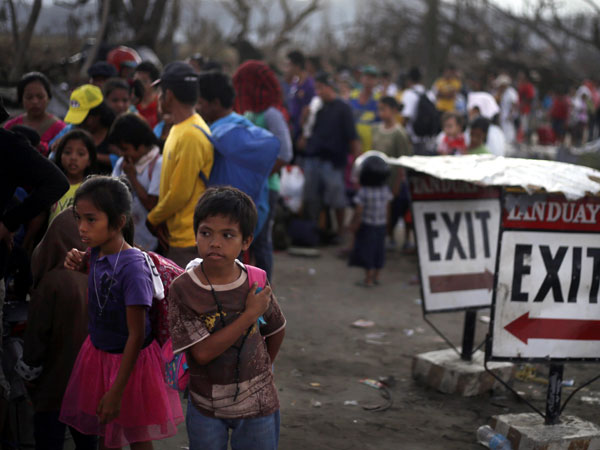
AP FILE PHOTO
TACLOBAN CITY, Leyte – Seeing their work as the purest way to help, doctors from Harvard University were drawn here to deliver much needed medical attention to the injured and the dying in typhoon-ravaged areas previously unreached by medical workers.
Four emergency physicians specializing in disaster medicine from the Beth Israel Deaconess Medical Center (BIDMC) Disaster Medicine Fellowship, the training hospital for Harvard University, did not hesitate to come here and help as they connected with those in need in the name of human compassion.
In their late 20s and 30s, the Harvard doctors reached Tacloban City on November 19, 11 days after the world’s strongest typhoon this year smashed much of the central Philippines on Nov. 8.
“We all pretty much knew that we wanted to come and help as soon as possible. It’s just the logistics of getting here and it took us a long time to get in here and we agreed to this opportunity to be able to help. We are all connected and any time we got to help it just strengthens all of us,” said Dr. Selwyn Mahon from Boston.
The doctors were able to come here through a Christian group, Active Christians Toward Service (Acts), which has partnered with the Tacloban-based Remedios T. Romualdez Foundation in bringing medical aid and other assistance to the typhoon-stricken areas in Leyte.
Mahon said that since they arrived, they have been visiting areas around Tacloban City and other towns across Leyte and were able to collectively treat more than a thousand patients suffering from wounds, respiratory and skin diseases, infections and even patients who had been ill before the storm hit the country, such as those with hypertension, thyroid problems and other health issues.
Mahon said they focused on villages whose names he could not recall where there was no sustained medical presence and there were still many areas still unvisited.
Mahon said he was more grateful than the people he had attended to in these villages because it was an opportunity to serve humanity – the reason why he went to medical school and became a physician. “This is rewarding for me,” he added.
Mahon is no stranger to disaster response, having been to Haiti in 2010 after the killer earthquake that left thousands dead.
“Disasters are all the same but the biggest difference is on how long one could get back on track, how long the people could get back to living the life that they had before. The country’s infrastructure will determine that,” he said.
“Sadly, in every disaster, the poor, people of special needs and children suffer the worst. If it will take you significant amount of time to gather all these resources, something horrible will happen again,” he said.
Mahon said the most heart-breaking scene he saw was not children crying but children who could no longer cry amidst things unimaginable.
“On Friday (Nov. 22), we went out by helicopter (provided by RTR Foundation) trying to get to areas that are hard to reach. Every time the pilot tried to lower the helicopter people started running out and he would lift off. It was heart-breaking because people thought we were bringing relief goods but we had other missions,” he said.
Dr. Khaldoon Alkhadi, who hails from Abu Dabi, was thankful he was part of the mission.
He said he had no words to describe how he felt seeing patients walking around, their houses destroyed, with no food and no water; or going going in villages with no school and no children running around.
Dr. Asaad Al Sufyani, a Saudi, felt fortunate to be part of the team helping disaster victims but it shocked him to see so much destruction.
“The first day we set up clinic in one of the barangays (in Tacloban City) I saw dead bodies being dug up from the debris. The sad thing was seeing bodies on the streets and bunch of kids were playing near them. I have a two-year-old son and it kinda hit me because I imagined my son in this kind of situation,” he said.
For Dr. Prasit Wuthisuthimethawee, a Thai trauma surgeon and emergency physician, the experience reminded him again of the 2004 tsunami that killed hundreds of thousands in Thailand, Indonesia, Sri Lanka and other places in the Indian Ocean basin.
Holding back his tears, Wuthisuthimethawee said that scenes of disaster, no matter how often you have seen them, remain horrible to behold.
Mahon said his team would not be staying long in Tacloban but another batch of five medical volunteers from BIDMC, together with seven Abu Dabi police groups that are Harvard partners, were to arrive on Saturday to replace them.
Related Story: